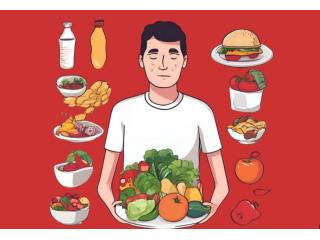Other Classes
Strength training is not just for athletes or fitness enthusiasts—it’s an essential part of maintaining a healthy and balanced body. Whether you’re trying to build lean muscle, increase endurance, or simply stay active, protein plays a critical role in muscle repair and growth. Traditionally, people have associated protein with animal products like chicken, fish, or eggs. However, an increasing number of individuals are discovering that plant-based diets can offer equally effective, and often healthier, sources of protein.
If you’re transitioning to a plant-based lifestyle or just want to include more plant foods in your diet, understanding where to get high-quality protein is vital. Learning about nutrition through a Health And Nutrition Course can help you understand the importance of amino acids, macronutrient balance, and how to fuel your workouts effectively with plant-based foods.
The Importance of Protein in Strength Training
Protein is the building block of muscles. When you lift weights or perform resistance exercises, small tears occur in your muscle fibers. Protein helps repair these tears, resulting in stronger and larger muscles over time. Without sufficient protein, your body can’t effectively rebuild or maintain muscle mass, which can hinder progress in your strength training journey.
Plant-based protein sources provide essential amino acids needed for muscle recovery and energy. The key lies in consuming a variety of foods to ensure you’re getting all nine essential amino acids that your body can’t produce on its own. Many people are surprised to learn that a well-planned plant-based diet can meet, and even exceed, protein requirements for athletes and active individuals.
Lentils – The Powerhouse Protein
Lentils are one of the most nutrient-dense legumes and a fantastic source of plant-based protein. A single cup of cooked lentils provides around 18 grams of protein, along with iron, fiber, and folate—nutrients crucial for muscle recovery and energy production.
Lentils are also versatile and easy to incorporate into your diet. You can use them in soups, salads, or stews, or even as a base for vegetarian burgers. They digest slowly, which helps stabilize blood sugar levels and sustain energy during long training sessions.
Including lentils regularly in your meals ensures a steady intake of protein and micronutrients, helping you stay fueled and strong. Understanding how to balance protein-rich foods like lentils in your meal plan is something you can master with a Health And Nutrition Course, which provides insights into combining foods for maximum nutritional value.
Quinoa – The Complete Protein
Quinoa stands out in the plant-based world because it’s a complete protein, meaning it contains all nine essential amino acids. One cup of cooked quinoa provides about 8 grams of protein, along with magnesium, zinc, and iron—minerals essential for muscle repair and endurance.
Unlike other grains, quinoa is gluten-free, making it ideal for those with gluten sensitivities or celiac disease. It’s an excellent post-workout food because it replenishes glycogen stores while supplying protein for muscle recovery. You can enjoy quinoa in salads, grain bowls, or as a side dish with roasted vegetables.
For those pursuing fitness goals while following a plant-based diet, learning how to balance meals with complete proteins like quinoa is key. This knowledge is often covered in a Health And Nutrition training, where you can learn to design personalized diet plans that support your fitness objectives.
Chickpeas – The Muscle-Building Legume
Chickpeas, also known as garbanzo beans, are another protein-rich food that fits perfectly into a strength training diet. One cup of cooked chickpeas delivers around 15 grams of protein, along with complex carbohydrates and fiber. The combination of protein and slow-digesting carbs provides sustained energy for intense workouts.
Chickpeas are also loaded with important nutrients such as manganese and folate, which help with muscle repair and metabolism. You can use chickpeas in various ways—add them to curries, make hummus, or roast them for a crunchy snack.
Their versatility makes chickpeas one of the easiest foods to include in your diet. Understanding how to combine chickpeas with grains or seeds to form a complete amino acid profile can enhance muscle recovery and performance—a principle you can explore deeply in a Health And Nutrition Course.







